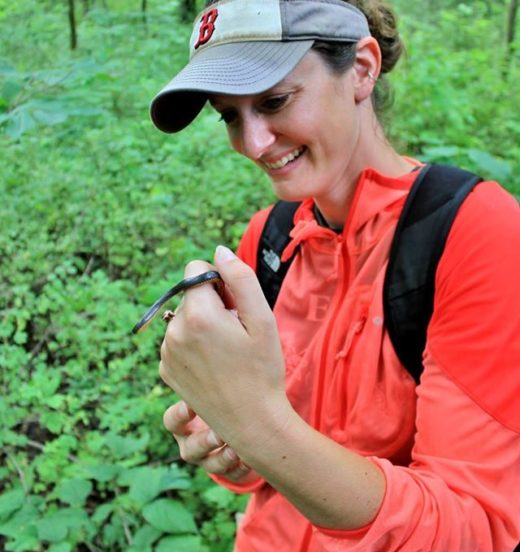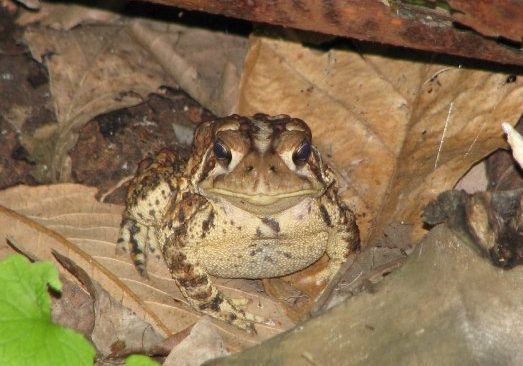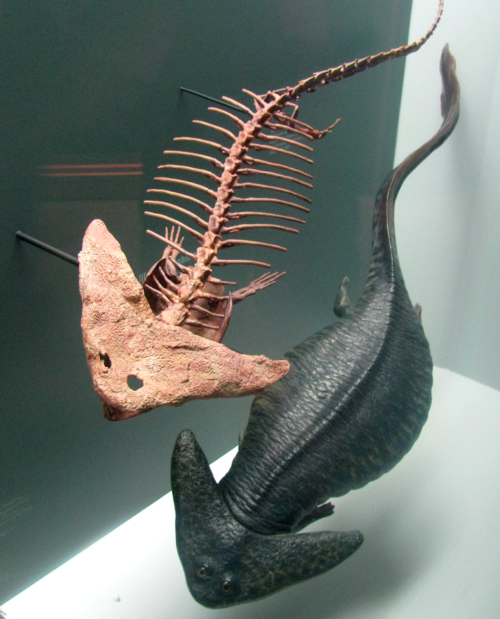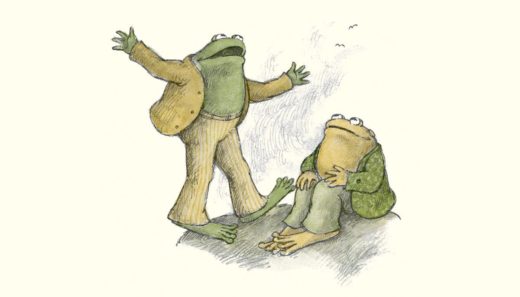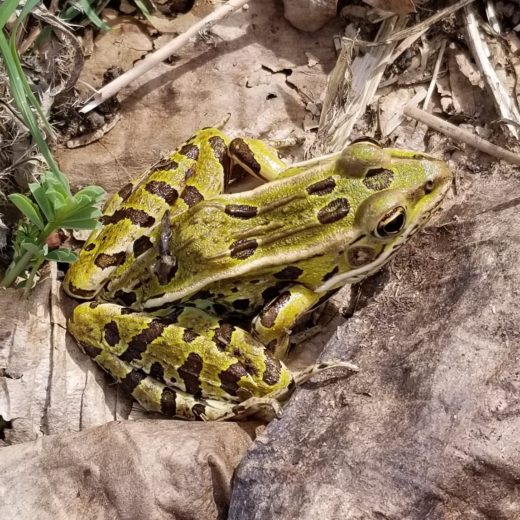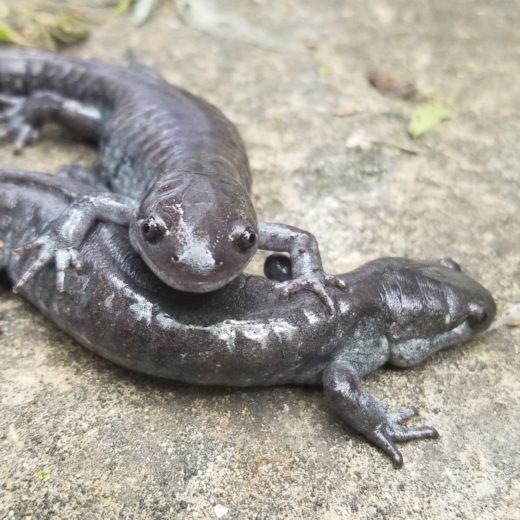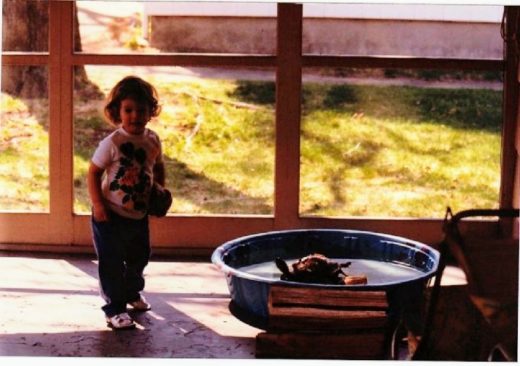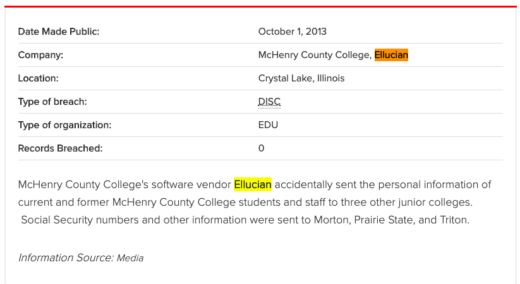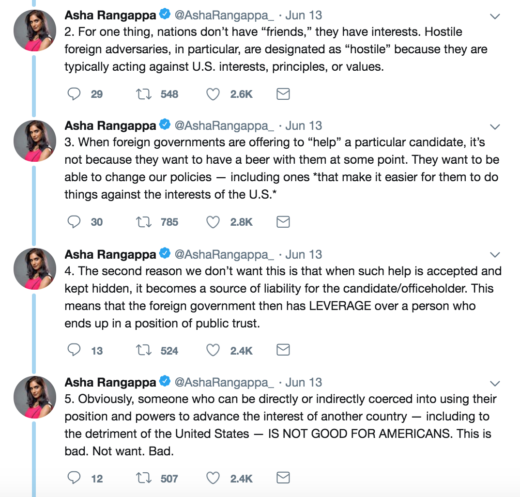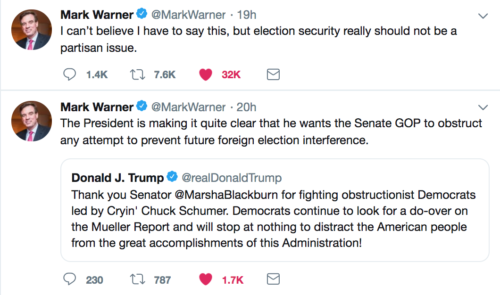Over the past few weeks, I’ve posted here about both tadpoles and frogs that my son and I had found in Riverside Park. Well, as a result of these posts, I’ve come into contact with Eastern Michigan University amphibian biologist Katy Greenwald, who, I guess, felt professionally obligated to write in and correct me, informing me that what we’d caught weren’t frogs at all, but actually toads. Well, one thing led to another, and I’m happy to share the following with you… It’s weird kind of a hybrid interview, starting with a conversation about herpetology, and then somehow kind of metamorphosing into a proper, though long delayed, Ypsi Immigration Interview. (Greenwald has been living here among us in secret, like a salamander, for nine years now.)
[above: Dr. Katy Greenwald with a ringneck snake.]
MARK: I know your research, for the most part, involves salamanders and snakes, but, if you’re OK with it, I’d like to start by talking about frogs and toads, as that’s what initially brought us together… I’d posted something on my site about how my son and I had raptured up a few newborn frogs from a vernal pond in Riverside Park, and you, I guess, felt compelled, as an employee of Big Herp, to correct me, telling me that what we actually had were baby toads… So I guess I’d like to start by asking how much of your life is taken up by educating people as to the differences between frogs and toads? Was your message to me just one of many that day? Are you constantly scanning social media, looking for opportunities to weigh in on instance of backyard amphibian misidentification?
KATY: In general it’s hard to get scientists to stop talking about their favorite things, so I have to admit that I get excited when I find opportunities to educate people about the really cool (and often misunderstood) critters in our own backyards. I get a lot of unsolicited questions and ID requests via email and on Twitter, which I am always happy to help out with. But, the majority of them actually tend to be snake IDs rather than frog vs. toad questions.
MARK: What’s the best “snake ID” request that’s ever come across your desk?
KATY: Probably my favorite ones to see are hognose snakes–they have an incredible defensive display that involves flattening out like a cobra, hissing, and eventually “playing dead.” They writhe around on their backs with their tongues lolling out and can actually even rupture blood vessels so they bleed from their mouths. It’s all very dramatic and tends to get people’s attention! A good hoggie photo makes my whole day. But, the most amusing snake ID requests are definitely the ones that turn out to be rubber toy snakes.
MARK: Do you have a hoggie photo that you can share?
KATY: I definitely have photos, but a video might be even better! If you’re not worried about expletives, this one is pretty great.
MARK: Hognose snakes, if I’m not mistaken, love eating toads. As more of a snake person than a toad person, would I be right to assume that you don’t lose a lot of sleep over that? Also, we do have hognose snakes in Michigan, don’t we?
KATY: I absolutely love toads, but everybody’s gotta eat. Toads tend to be quite abundant, so I don’t think hognose snakes make much of a dent in their populations. And yes, we have hognose snakes here in Michigan–it’s the eastern species, Heterodon platyrhinos.
MARK: So have you ever been sent something that just makes absolutely no sense, like a photo of a species that’s never, to your knowledge, been seen in the midwest? I’m just imagining you and your students opening an email, seeing a photo Sri Lankan pit viper taken by someone on a remote farm in Ohio somewhere, and absolutely losing your minds.
KATY: The only things I’ve ever gotten that have been totally out of place have been tropical frogs that have likely been accidentally imported on houseplants. I have seen a couple of treefrogs that have ended up in odd places that way. No pit vipers… yet!
MARK: OK, so let’s talk about the differences between frogs and toads. Having studied the work of Arnold Lobel, I know a few things. For instance, I know that toads are the more uptight of the two, and more prone to exhibit traits associated with Obsessive Compulsive Disorder. But, other than that, I don’t know much about amphibian biology, psychology, etc…
KATY: Toads are definitely more serious. I mean, just look at their facial expressions. But in terms of biology, both are in the same order (Anura: the tailless amphibians). You can think of toads as a subset of frogs. They tend to live in drier habitats and have wartier skin (important aside: they can’t give you warts!). But in many ways, the “frog” vs. “toad” dichotomy is just a fluke of English. There are not many anurans in England and they all fall into either the family of “true frogs” (Ranidae) or toads (Bufonidae). I’ve often wondered whether this dichotomy exists in, e.g., Central and South American indiginous languages where there is MUCH higher anuran diversity and lots of other families (some of which we English-speakers call “frogs,” and some of which we call “toads,” all willy-nilly). Hopefully that wasn’t too much scientific jargon for one answer!
[above: A serious toad.]
MARK: So is it more accurate to say that toads descended from frogs, or that they have a common ancestor? And do we have a sense as to when the division happened?
KATY: All modern-day anurans had a common ancestor. The oldest known frog fossils were found in Madagascar and date to about 250 million years old. The group we call toads (Bufonidae) arose much later, in the Paleocene, roughly 60 million years ago.
MARK: While we’re on the subject of frog evolution, what can you tell us about Gerobatrachus? [I was searching “amphibian evolutionary controversies,” and it led me down the path to Gerobatrachus, and I’m trying to understand the significance of the fossil’s discovery in 1995.]
KATY: Gerobatrachus is an early amphibian fossil that has traits seen in both modern-day frogs and salamanders, so it became known as a “frogamander.” I haven’t followed the debate too closely, but its placement in the amphibian evolutionary tree could be informative for parsing out how our three living groups (frogs, salamanders, and caecilians) are related to one another. This has been a point of contention for some time. Some scientists think all three evolved from an ancestral group called the Temnospondyls, while other scientists think that caecilians’ ancestors branched off earlier from another group (the Lepospondyls). An important but only semi-related note is that your readers should all Google search Diplocaulus, because that’s the coolest amphibian fossil out there.
MARK: Is Diplocaulus is the giant salamander kind of thing with a boomerang for a head? I haven’t been to the new Museum of Natural History at U-M yet, but they used to have one on display in their old location. It was my favorite thing in their collection… if I’m thinking of the right fossil.
KATY: Yes! I’m tickled that you remember Diplocaulus. Actually, that’s another ID request that I got several times when this image went viral. It’s a (crazy beautiful) model created by a Japanese artist named Goro Furuta, and not a living creature (anymore).
[above: The University of Michigan’s Diplocaulus.]
MARK: Back to Lobel for just a second, I have another question… Can frogs and toads, as he maintained, really be “friends”? Is there any evidence of them, in the wild, going for walks together, for instance, or helping one another with household chores?
KATY: I like to think that all anurans live a chore-free existence. Frogs and toads do collaborate on some lovely musical pieces though, if you’re in the right wetland at the right time.
MARK: Before we move on, I should say that, all kidding aside, Lobel’s “Frog and Toad” books are some of the best children’s books ever published. They talk about friendship and kindness in way that most books written for children don’t. And they accomplish it without being at all condescending, which is incredibly rare in childrens’ literature. Plus, as I kind of hinted at above, they’re the only childrens’ books that I know of that offer any insight at all as to what it’s like to live with OCD. And, I’ve heard it said, they’re also the first books for young readers to show an at least somewhat romantic same-sex relationship… Would I be right to assume that herpetologists like Lobel? Is he kind of an icon in gay herpetology circles?
KATY: I agree that these are lovely books. Strangely enough, though, I don’t remember talking about them with other herpetologists. Adding this to my mental list for the next conference I attend.
[above: Lobel’s Frog and Toad.]
MARK: If you do ever host a “Frog and Toad” panel, be sure to tape it for me… What are herpetology conferences like, anyway? Are there a lot of fights?
KATY: Herpetologists are generally a pretty agreeable group, unless they disagree over taxonomy. I’ve never seen a fight.
MARK: Well, if they ever did, it would make a great “Herp Perp” headline.
KATY: This makes me want to get into a fight.
MARK: As you might have guessed from the above references to OCD, I happen to have a bit of it, and, perhaps due to this OCD of mine, I started worrying that the vernal pool in Riverside Park that I mentioned in my earlier post about tadpoles might dry up. I was concerned that, if it did, these particular tadpoles that my son and I found might not be able to complete their metamorphosis into toads, and, so, as a result, we took a bunch home to raise after doing a little research… Anyway, we couldn’t find anything in our research to suggest that metamorphosis might speed up in instances where negative environmental factors come into play — like the drying up of a pond — and I was just wondering if that’s something that’s been researched. Can environmental changes speed metamorphosis?
KATY: Yes, definitely! In biological terms, amphibian development is what we would call a “plastic” trait, meaning that it can vary a lot based on external conditions. There is lots of evidence of different species speeding up hatching and/or metamorphosis when environmental conditions warrant it — like if a pond is drying, or if there are lots of predators around. Dr. Karen Warkentin at Boston University has shown this in really dramatic fashion with red-eyed treefrogs.
MARK: That video is absolutely insane… I wonder if frogs that are born prematurely due to environmental stress suffer from adverse health effects as a result.
KATY: This is an excellent point. I don’t know about red-eyed treefrogs specifically, but for many of our local species, their size at metamorphosis is a good predictor of their later success (how well they survive, and how many offspring they produce). So I wouldn’t be surprised if bailing out early does have some adverse effects… but not as adverse, of course, as being eaten by a snake.
MARK: I’ve heard that frog populations are dwindling globally, and that the consensus seems to be that it’s being caused by a frog fungus called chytrid. Again, I know it’s not necessarily your area, but, as the only herpetologist that I’m presently in contact with, I’m wondering if you know whether or not our local frogs are being affected.
KATY: Amphibians are the most threatened group of animals out there–it is estimated that about 40% of all species are in decline. There are a bunch of reasons, but the primary ones are habitat destruction and the fungal disease that you mentioned, chytridiomycosis. It came on the scene seemingly very suddenly in the 1990s, and has caused widespread declines of hundreds of species (and approximately 100 global extinctions).
The worst effects were in Central and South America and Australia, as well as the western United States. Interestingly, while the fungus is present here in Michigan, we have not observed any serious die-offs or symptomatic animals. It’s been detected genetically from skin swabs, but many of our local species appear to be fairly resistant to it. The scary follow-up, though, is that another species of “amphibian-eating fungus” was recently discovered in Europe. If it makes it across the Atlantic, it looks like many of our salamander species will be highly susceptible, including local species like the red-spotted newt.
MARK: How does the fungus work exactly? How does it kill them?
KATY: Frogs are infected by zoospores–tiny mobile fungal “seeds” in the environment. Once on the frog, these produce bottle-like structures called sporangia within the skin–here’s a picture. These sporangia disrupt ion exchange, which can ultimately lead to heart and other organ failure. The sporangia then produce and release more zoospores, which disperse to infect other individuals.
MARK: There was a short article about frogs being like canaries in the New York Times back in 1990, I guess at around the time that people were beginning to take notice of the die-off. At the time, many seemed to think that we were losing frogs due to pollution… that they were alerting us to an imminent environmental danger, like the proverbial canary in the coal mine. And I’m just wondering if you see frogs as what people refer to as a “sentinel species”?
KATY: You frequently hear this analogy being used for amphibians, and I do think it’s appropriate. A big reason is that their skin is so sensitive. They don’t have scales or fur, and they all do some degree of breathing (oxygen exchange) through the skin. This means that they also tend to soak up environmental contaminants to a higher degree than other types of animals. If chemicals we are in contact with–like herbicides–cause major issues for amphibians, it is definitely plausible and even likely that they could have adverse human health impacts as well.
MARK: OK, so let’s talk a little more broadly about amphibians in general. What’s the state of the amphibian world along the Huron River? Do we have good data as to how our species are doing?
KATY: Compared to the global situation, our local amphibians are actually doing very well. The primary threat here in Michigan is habitat loss. Most amphibians need two types of habitat in close proximity in order to complete their life cycles–an aquatic breeding site like a vernal pond, and some intact upland area (often, but not always, forest). This increases the challenges of conserving habitat for them, but luckily, we have a lot of nice natural areas in our region that do a good job of providing what they need.
[above: Leopard frog found in the Greenwald family garden.]
MARK: So, what can readers of this site do to help? Are there interventions that people can assist with to aid local amphibian conservation efforts?
KATY: Absolutely! First and foremost, people should understand the HUGE value of vernal ponds for amphibians. Often these just look like little “puddles in the woods” and people think they can be drained or developed without causing much harm. But, these are absolutely critical breeding habitat for amphibians, precisely because they dry down in the summer and therefore don’t support fish populations (fish are major predators on amphibian eggs and tadpoles). They are a highly threatened habitat type, so if you have one on your property, please protect it!
Aside from that, people can help by avoiding chemical applications on their property whenever possible. We know that many of the commonly used herbicides and pesticides kill or harm amphibians. Last but not least, here’s the one I always get in trouble for: keep your cats indoors! Cats are a huge threat to all kinds of local wildlife.
If you’d like to learn more about local amphibians and also contribute to a long-term dataset, Ann Arbor Natural Area Preservation conducts frog and toad surveys every year, and I am sure they’d love more volunteers.
MARK: Have you always been a cat hater?
KATY: I don’t hate cats! I am allergic to them, though. And I do think they should be subject to the same general societal rules we accept for dogs (i.e., not allowed to run around on their own through neighborhoods and natural areas).
MARK: I’ve heard from a friend that chickens do their share of frog-eating… On the hierarchy of amphibian predators, are house cats as bad as, say, water shrews? And is it your advice that all of these animals be kept indoors?
KATY: Everyone should have a house chicken. Just think about the breakfast convenience. But, on a serious note, it’s really a question of scale. A recent study estimated that cats are responsible for the deaths of literally billions of birds and mammals each year, and they have contributed to global extinctions of bird, mammal, and reptile species.
MARK: I guess that’s what I’m trying to get at… the scale. Are cats the most active amphibian predator out there, or is it just that they’re the worst one that we have some control over? I should add that I don’t necessarily disagree with you on this. I’m a frog lover with an indoor cat.
KATY: In our region, I can’t think of a more destructive non-native predator… unless you count cars? Raccoons are also incredibly efficient predators, particularly on turtle nests and hatchlings. They are native here, but are at extremely high density due to being “subsidized” by our food waste and other resources, so they are still a major problem for conservation.
MARK: How did come to you choose snakes and salamanders as your area of focus? I mean, why not newts? Is the big money in snakes? Or was it something else?
KATY: Unfortunately there’s no big money in herpetology–that all goes to pandas and sharks. [Laughs.] Part of the answer is that I’ve just always loved these critters. I was the kid out flipping rocks to see what was underneath and then trying to bring salamanders home in my pockets. I guess I never outgrew it. But the other part is that when I started grad school, I was interested in looking at how human-caused landscape change–agriculture, development, etc.–affects animal populations and dispersal. Amphibians are unfortunately a great system for that sort of question, because they don’t tend to move very far, and because they are so susceptible to chemicals, desiccation, and the like. They are much more likely to be affected than something like a bird, for example, which can just fly over a corn field.
MARK: Assuming you pursued that research in graduate school, I’m curious as to what you found.
KATY: I did, and I often joke that my whole dissertation can be summed up in four words: salamanders don’t like corn. I found that agriculture was by far the strongest predictor of population isolation (and this held true for several species that I looked at). This was important because it meant that with a couple of simple metrics–how big a pond is, and how much agriculture is in the surrounding area–we could predict quite accurately how genetically isolated the population would be. In turn, the level of isolation can inform us about how likely that population is to persist into the future.
MARK: So, is there some kind of algorithm that environmental impact folks can use that would tell them, “If we put a corn field of such a size, next to a lake of such a size, we’ll see an amphibian decline of x%”?
KATY: It’s not quite that easy, but the gist of what you just described is what conservation biologists call “Population Viability Analysis.” A major goal of my work was to figure out what info we would need to parameterize a PVA model to predict how amphibians would do in different landscape scenarios. Typically what you end up with is an estimate (with error bars) of how likely a population is to persist for some amount of time, say a hundred years.
MARK: Before I moved to Michigan, I was an historic archeologist, and, to a large extent, the work that I did, around New York, New Jersey, and Pennsylvania, was mandated by legislation. I don’t recall the specific criteria, but, in some instances, when development was imminent, cultural impact studies were mandated, and our firm would be called on to do the research and prepare them. At any rate, this last question that I asked you started me thinking about environmental protections here in Michigan, and what kind of environmental impact studies are required by law prior to development. Do we, in your opinion, have sufficient protections, especially as they relate to wetlands? I should add that the cultural impact study system that I worked under wasn’t any kind of panacea. It was several decades ago, but, as I recall, most developments went forward, regardless of what we found.
KATY: My understanding is that Michigan’s state regulations primarily apply to wetlands that are within limited distances of other water bodies (the Great Lakes, inland rivers and lakes, etc.). There is a permitting process for dredging, draining, filling, or otherwise impacting these wetlands. I don’t know how stringent or strictly enforced this process is. Many of the wetlands that are of highest value to amphibians are small vernal pools in wooded areas, and so I don’t think they would be protected at all.
MARK: I’d heard from a friend that there was a local wetlands relocation project not too long ago in Ann Arbor. Apparently — and I might have some of this wrong — before building Skyline High School, several potential locations were under consideration, one of which happened to be a wetlands area. And, for whatever reason, that’s the site where they chose to build the school. Before beginning construction, however, they attempted to relocate the wetlands, which is something that I didn’t know was even possible. According to this friend of mine, who worked on the amphibian relocation portion of the project, not only were about ten thousand critters moved, but a creek was rerouted and soil was moved. I don’t know if you have any knowledge of this effort, but I’m curious to know your thoughts on the practice of wetlands relocation. Does it ever work?
KATY: There has been a lot of research on how to improve constructed wetlands for wildlife. I had a friend in grad school who did his whole dissertation on this topic. Back then, “mitigation ponds” (ponds built to replace ones that had been drained or developed) were typically huge, open water, and steep-banked. My friend called them “bathtubs.” These support a really different amphibian fauna than a small, forested, shallow vernal pool. Generally green frogs and bullfrogs can be happy in a “bathtub,” but not much else. I have seen some great examples of constructed wetlands in more recent years, though, so I do think this is an area where research has done a nice job of informing management.
Translocation of animals is tricky as well. In general, moving eggs or larvae is more successful than moving adults. Once amphibians have bred in a pond, they tend to have very high “site fidelity” and will try to return to their original pond if moved away (even if said pond no longer exists).
MARK: I have this dream of one day being able to retire, and turning my backyard into a frog pond. If this is a terrible idea, please talk me out of it. [I don’t want to just create a buffet for neighborhood cats.] And, if it’s a good idea, please give me advice as to how I should construct it.
KATY: I think you should do this long before you retire. I probably can’t do this question justice in a small space, but the Habitat Management Guidelines document put out by Midwest Partners in Amphibian and Reptile Conservation (MWPARC) has some great info on this topic. There is also a wildlife biologist named Tom Biebighauser who conducts trainings and has a lot of other resources for people interested in constructed wetlands. I heard him give a talk one time about using dynamite to create vernal pools, so that’s one approach that your neighbors might enjoy.
MARK: If you could make a wish and bring one amphibian/reptile species to Michigan what would it be? I should probably add “without doing any ecological harm” to the end of that question. I mean, as a scientist, I suspect you probably frown on the introduction of invasive species. I’m just wondering what your favorite non-Michigan amphibian/reptile might be… like what animal you’d just love to see cross your path every morning on your way to your lab.
KATY: OH THIS IS HARD. Reptiles and amphibians each have one subgroup that most people haven’t heard of, and that doesn’t live in the U.S. For reptiles, it’s an awesome animal called the tuatara. It looks like a lizard but is only found in New Zealand, in really cool climates. For amphibians, it’s the caecilians–a really poorly understood group of legless animals that live in the tropics. From a diversity perspective, adding tuatara and caecilians would be the way to go. From a nostalgia perspective, though, I’d just (re-) add the marbled salamander, Ambystoma opacum. This is the species I worked with in grad school in Ohio. They are state-endangered in Michigan and most records are from 40+ years ago. So even if they’re still here, we definitely need more of them because they are adorable.
MARK: Given that we know they existed here at one time, have there ever been coordinated efforts to reintroduce the marbled salamander here in Michigan?
KATY: Not that I’m aware of. And if you hear of this happening in the future, it definitely wasn’t me smuggling them in from Ohio.
MARK: Speaking of invasive amphibian species, what are the people of Australia doing about their cane toad problem?
KATY: That situation is a mess, and will probably never be fully solved. As far as I know, they’ve tried just about everything–removal of eggs from breeding habitat, trapping and culling adults, “bounty hunts,” etc. Dr. Rick Shine is a leading researcher on cane toads, and has developed some successful methods such as baiting tadpoles traps with their own toxins, because apparently they cannibalize each other. The craziest part of the cane toad story is that they were released on purpose, to combat another invasive species, a beetle. But they ended up eating pretty much everything in Australia except the beetle, and poisoning any native species that tried to eat them. At least it all resulted in a kind of campy and fun documentary though, right?
MARK: Do we have problematic invasive amphibian and reptile species in Michigan? I hear a lot about the damage done by other invasives, like zebra mussels and asian carp, but I don’t think I’ve ever heard about carpetbagging amphibians wreaking havoc.
KATY: We don’t have anything that comes close to the species you mentioned. However, it is likely that our red-eared slider turtles are introduced. They are popular pet-trade turtles (and their popularity apparently spikes every time there’s a new iteration of the Teenage Mutant Ninja Turtles!). People buy them and then realize that aquatic turtles are terrible pets, so they let them go in a nearby waterway. They are perfectly capable of living and reproducing in this area, but we don’t know much about how this affects other species.
Interestingly, one of our native species is a major invasive problem elsewhere–the bullfrog. They have been introduced pretty much globally, primarily by escaping farms where they are bred for frog legs. Fortunately for them but unfortunately for other species, they are completely resistant to the chytrid fungus, so they are thought to act as an important vector for disease transmission in many parts of the world.
MARK: My parents live in Savannah, Georgia, and one of the things I like best about going to see them is that there are lizards and salamanders everywhere. Here in Michigan, though, I don’t know that I can remember the last time I encountered a lizard or salamander in the wild. I know that they exist in the state, but maybe we just don’t hang out in the same places. Or maybe they’re around me all the time here, but they’re just better with their camouflage. [My sense is that we just have fewer of them, and they’re less bold.] So, with all of that said, I’m curious as to where one would go if they wanted to see a salamander or lizard in the wild, here in Washtenaw County.
KATY: Georgia is a herpetological paradise! I think there are something like 150 species there, versus about 50 in Michigan. We only have two species of lizards in Michigan, and one is only known from a single site up in the Thumb. The other, as far as I know, does not occur in Washtenaw County (and it looks like the Michigan Herp Atlas agrees). Salamanders, on the other hand, are all over the place–but generally hanging out under rocks and logs, so you probably walk past lots of them and never even know it. Find some nice forest, roll some logs, and I’ll be surprised if you don’t at least find a redback salamander. But I can’t say that without adding the Cardinal Rules of Log Flippin’: if you’re going to handle the salamander, it’s best to have gloves on, or VERY clean hands (sunscreen, bug spray, etc. can hurt or kill them). When you’re done admiring, put the log back as you found it, and then release the salamander next to it so nobody gets crushed. It will find its way back underneath. Redbacks in particular are very territorial, so you should return it to the same log where you found it.
MARK: Thank you for introducing me to the Michigan Herp Atlas. You’ve changed my life… As for your comment about Georgia being a “herpetological paradise,” it makes me wonder if there are also “herpetological hells”… Like do you have any PhD friends that got stuck in states with super low amphibian diversity, and are they always absolutely inconsolable at conferences, like just sitting at the bar, rocking back and forth, and crying about how you have no idea how bad it is for them?
KATY: The center for salamander diversity (globally!) is the southeastern U.S., and then species richness declines as you move north and west. So, the amphibian list is not lengthy when you get up to the Dakotas, Montana, etc. and similarly low in the arid Southwest (that’s the land of reptiles). But, there are still some really cool amphibian species in those places! Even Alaska has wood frogs. They spend most of the year literally frozen solid, but then thaw out and hop away to reproduce in the spring.
MARK: I see on your lab’s website that you have a drawing of a smeet. I’m curious as to when you found out about the Ypsilanti smeet. Had you heard of it before accepting the position at EMU? It is something that people in herpetological circles discuss? Did it perhaps influence your decision to take the position at Eastern?
KATY: I first heard of the smeet frog after starting my position at EMU, and it was because someone emailed me to ask if it was real! From that point on I was absolutely in love with this fuzzy, flying, urban legend. It’s definitely our unofficial lab mascot.
MARK: What’s the most unbelievable thing about the smeet? Is it the fact that it’s said to fly, or that it’s furry? What about the story made you think it was an urban legend?
KATY: Well, there are flying frogs and “fuzzy” frogs, so now that you point it out, maybe it isn’t all that unbelievable. I’ll hope to see one next time I’m at Riverside Park!
MARK: I think the drone fishing has driven them all away.
KATY: Maybe this guy will get an accidental smeet sighting on his drone footage… Our own fuzzy, flying Nessie.
MARK: Wait, you went to grad school in Ohio, right? Well you must know of the Loveland Frog.
KATY: I spent 7 years in Ohio as a grad student and post-doc, and somehow in all that time I never heard about this!
MARK: Is is safe to assume that you’ll be looking into the Loveland Frog, now that you know of its existence? And did you read this part… “In August 2016, local Cincinnati TV stations reported that ‘a night of fun turned into a chilling tale of horror’ when two teenagers playing Pokémon Go between Loveland Madeira Road and Lake Isabella claimed to see a giant frog near the lake that ‘stood up and walked on its hind legs’”?
KATY: This still sounds like a night of fun to me.
MARK: OK, back to amphibian sex, your work, as I understand it, largely involves the study of all-female salamander species that “steal” sperm from other salamander species in order to reproduce… Is that correct? And, if so, I’m curious to know how you got into that.
KATY: Yes, these “unisexual” (all female) salamanders are incredibly abundant in this area, and as far as we know, their mode of reproduction is globally unique. I first became interested in them in grad school, when one of the most knowledgeable amphibian biologists in Ohio warned me away from them. I was planning on doing some genetic analysis, and was going to work with Jefferson salamanders. He told me “oh, you don’t want to work with Jefferson salamanders. You’ll get your samples back to the lab, and it will turn out they’re not Jefferson salamanders at all, but these weird hybrids.” That piqued my interest, which was only heightened when I realized that they’re not “hybrids” at all–at least not in the way we generally think of hybrids–but rather their own unique 5-million-year-old sperm-stealing lineage. They can have anywhere from two to five sets of chromosomes stolen from up to five different species!
[above: Unisexual salimanders from Kelleys Island, Ohio. Greenwald says It’s one of my favorite places to see them because, on Kelleys Island, they have DNA from three different species in them–blue-spotted, smallmouth, and tiger salamander, with one complete genome from each species.]
MARK: So, how exactly does reproduction occur within these species? Can you walk us through it?
KATY: Sure. Most of the salamanders in this genus (Ambystoma) are typical sexually reproducing species that breed in ponds. By “typical,” I mean that they have both males and females, and offspring inherit one set of chromosomes from mom, and one set from dad, just like us. During the breeding season, males of these species produce little sperm packets called “spermatophores” in the breeding ponds. These are picked up by the females, used to fertilize the eggs, and then the eggs are laid.
In many of these ponds, unisexual females are also present, and will breed with the males of the other species. Most of the time, this just triggers egg development, but the male’s DNA is not actually incorporated into the offspring–so the offspring produced are clones of mom. But sometimes, the dad’s DNA gets added in. So if mom had two sets of chromosomes, the offspring will have three. If mom had three, they’ll have four. Unisexual females can lay a lot of eggs (around 60-80 at our study site), and these can be (and often are) a mix of clonal offspring and those that have the male’s DNA. Depending on which sexual species are present, these salamanders may have three different genomes from three different species. That… shouldn’t work.
MARK: Are there any other animals on earth that do this, or is “sperm stealing” unique to these salamander species?
KATY: Although there are other interesting reproductive modes out there, nothing else that we know of is quite this complicated and crazy.
MARK: So what’s your sense as to why these particular salamander species evolved in this way? What’s the evolutionary benefit?
KATY: This is a great question. One hypothesis is that this mode of reproduction is what you could call an “evolutionary fast track.” If a unisexual female ends up at a breeding pond full of, say, Jefferson salamanders, that’s probably a good place to be a Jefferson salamander. She may be able to snag a whole locally adapted genome for her offspring by breeding with a male from that pond, which would almost certainly be a benefit.
At the same time, these unisexual salamanders avoid the evolutionary cost of sexual reproduction–most of which has to do with the “twofold cost of males.” (Sorry, males.) Evolutionarily speaking, an all-female lineage should grow twice as fast as one that has to make males, because every individual of that all-female lineage can reproduce by herself. In addition, those females get to pass down their entire genome, whereas sexual species only get half of their genes into the next generation. A lot of ink has been spilled in evolutionary biology about what the benefits of sexual reproduction are that must outweigh these costs–but these salamanders may have stumbled upon a workaround.
MARK: So these offspring aren’t exactly clones, but they’re pretty close… I mean, the offspring of these species, if I’m understanding correctly, are picking up some trace amounts of genetic material from the males, but, really, they’re just copies of their mothers… So, on one hand, the reproductive timeline is accelerated, which means that evolution is sped. But, on the other, the changes between generations are really minimal, given that the females are passing along their entire genomes each time, instead of engaging in the kind of “I’ll give half, you give half” scenario that most other species use. I guess the question is, is that kind of evolution too slow. Does it put a species at risk to put 90-some percent of their evolutionary eggs in one basket, as it were? Is that making any sense at all?
KATY: Well, they are either pretty much identical to their mother (if they don’t include the dad’s DNA), or they are potentially substantially different (if they add dad’s DNA, it’s a whole genome, not just trace amounts). But I think what you’re getting at is that, yes, it’s “evolutionarily dangerous” to be stuck with only clonal reproduction. Clonal lineages don’t have any way to get rid of bad mutations that may crop up by chance, and they are also unable to respond to changes in the environment. If a new pathogen arrives on the scene and one clonal individual is susceptible, they’ll all be susceptible. Genetic variation (and the resulting ability to respond to environmental changes) is thought to be the biggest evolutionary advantage of sexual reproduction.
[above: Video from Science Friday’s The Unisexuals: A Story of Salamanders and Sex featuring Dr Greenwald’s work.]
MARK: So, when did you start your lab here, and how are you liking Ypsilanti so far?
KATY: I moved to Ypsilanti in July 2010 and I really love it here. I feel very lucky to have landed in this community.
MARK: When I started this, I had no idea that you lived in Ypsi. [Quite a few EMU folks live in Ann Arbor.] And, now that I know that you do, I’m thinking that maybe I should add a few questions, so that I can also include this in our Ypsilanti Immigration Interview series. If you’re up for that, just let me know.
KATY: Sure!
MARK: Where did you grow up, and what kind of kid were you?
KATY: I grew up in the Boston ‘burbs. I would describe my kid-self as fairly nerdy and pretty shy. I would generally rather have been reading than doing anything else. I always had a few close friends, but we definitely weren’t the “cool kids.” Mostly, though, I have always had a huge fascination and drive to work with animals. When you’re the kid who loves animals, people generally suggest that you should go to vet school. So that was my plan from pretty much as early as I can remember. I worked in dog kennels, vet hospitals, and the Live Animal Center at the Boston Museum of Science, and when I went to college I was decidedly “pre-vet”–but really just because I hadn’t considered other options. I love being outside and I’m generally kind of squeamish, so my current gig is a much better fit.
[above: A young Dr. Greenwald approaches her father’s pet red-eared slider turtle named Walden, who lived in a pool on their screened porch when she was a kid.]
MARK: How did you come to make the switch over to research?
KATY: I conducted an undergraduate research project in college. It had nothing to do with my current work–it was a behavioral study of a polar bear cub at the local zoo!–but I got to experience the whole scientific process. I designed the study, collected data, analyzed it, and even wrote it up for publication in a journal called Zoo Biology. I loved every part of it, and I don’t think it’s too dramatic to say that it changed the trajectory of my life. And now (in a full-circle sort of situation) I get to advise undergraduate research projects, and it’s one of my favorite parts of my job.
MARK: Do you know the circumstances of your birth?
KATY: I know that I was a caesarian section because I was a giant baby (9 lbs!) and also breech. I still don’t have any sense of direction.
MARK: What’s your first memory?
KATY: I remember finding a baby bird that had fallen out of its nest when I was playing outside at my babysitter’s house. I got a big block that had a hole in the middle, set it up on a rock wall and stuffed the hole with grass and leaves, and put the bird in there trying to recreate its nest. I’m sure that approach didn’t work, but the story is kind of telling.
MARK: What, if anything, did you know about Ypsilanti before moving here?
KATY: Not much! We have a friend who had moved to Ypsi to get his Master’s at EMU while we were still in Ohio, so I’d been up to visit him once or twice. I think we went to the Tap Room?
MARK: That’s where I had my first real date with my wife. It was February 11, 1993, on my 25th birthday… before it changed ownership and they took out the booths. Well, I’m glad that you had a positive enough experience that you decided to come back.
KATY: I’m glad my colleagues at EMU decided to offer me the job!
MARK: As I mentioned above, quite a few EMU faculty members choose to live in Ann Arbor. I’m curious as to your decision to live in Ypsilanti? What factors did you consider when making your decision to live here?
KATY: Not knowing much about either place at first, our initial decision to live in Ypsi was primarily because we didn’t want to drive to work. My husband was teaching at EMU at the time as well, and we wanted to be able to just walk or bike. We rented a place by the Corner Brewery for the first year and a half, and really enjoyed the people and the “vibe” of Ypsi, for lack of a better word. Ann Arbor is nice, but it always feels kind of like a movie set to me.
MARK: Did EMU have a program at the time, encouraging home-ownership in Ypsi? I lose track of time, but I seem to recall that there was a program for a while, where they were offering to help with mortgages, if incoming faculty members were buying in the city. I don’t know how aggressively they promoted it, but I think it existed….
KATY: That program did exist for a while, but it was after we bought our house. I think I have a couple of colleagues who were able to benefit from it, though.
MARK: How have you seen Ypsilanti change over the nine years since you moved here?
KATY: The thing that has amazed me most is the accelerating housing prices. When we were looking to buy back in 2010, there was almost nothing in town over $200,000 (and anything close to that price would have been one of the huge, beautiful Victorians). There was a nice little house in our old neighborhood by the Corner that I think went for something like $40,000. It is definitely cause for concern in light of housing affordability and gentrification, and how those issues would change the character of Ypsilanti.
There have been a lot of good changes too, though, like vacant storefronts being revitalized by small business owners, and good, positive momentum in public education at the K-12 level. Oh, and Rutherford Pool! On a personal note, I have made some truly incredible friends here, the kind of friends that are family, and that really makes it feel like home.
[above: Snake yoga.]

